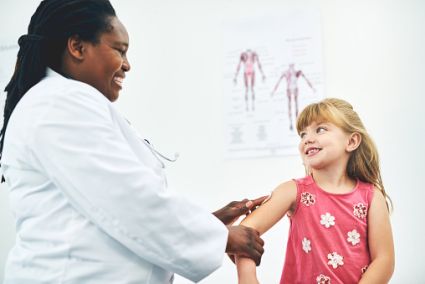The COVID-19 pandemic is hitting some groups especially hard. Its disproportionate impact on older adults, African Americans, and those affected by obesity or who have underlying health conditions like cardiovascular disease, has quickly captured the attention of the public and scientists scrambling to make sense of this unprecedented health threat. Less is known about how it is impacting, or will impact, other vulnerable populations such as those with substance use disorders or pregnant women and their children.
The National Institute on Drug Abuse (NIDA) and other partnering institutes at the National Institutes of Health (NIH) are poised to increase our understanding of the COVID-19 pandemic on pregnant women and their children thanks to a major 10-year research project currently in its pilot stage.
The HEALthy Brain and Child Development (HBCD) Study will use brain imaging and a wide array of other research tools to understand the impact of early exposure to social stressors and environmental exposures on brain development. Pregnant women will be enrolled in the study during their second trimester or after the birth of their baby, and they and their children will be followed for a decade. The sample will include some women with substance use disorders, including opioid use disorder, and some will have had a history of exposure to COVID-19 during their pregnancies.
In our lifetimes (if not the larger scope of history), the COVID-19 pandemic is unprecedented. But the science we can bring to bear on it is also without precedent.
A longitudinal study of this size will provide valuable information about many environmental factors that affect brain development and health across the first decade of life. We already know that exposure to opioids and other substances in the womb or through breastmilk may have important developmental consequences, and HBCD will greatly clarify the effects of prenatal and early drug exposure on outcomes in children. Similarly, it is well known that certain viral infections during pregnancy can negatively impact the developmental trajectories of the brain, in some instances increasing the risk of psychiatric disorders. Importantly, the study will inform us about the brain developmental impact of family interactions, toxins in the environment including secondhand smoke, nutrition, education, and physical activity, and, in the process, reveal the effects of factors like neglect, abuse, and economic uncertainty to provide insight into mechanisms of resiliency.
Such a study is perfectly suited to capture the effects of unanticipated events like the COVID-19 pandemic. Very little is currently known about the vulnerability of pregnant women and their not-yet-born babies (including effects to their brains) of SARS-CoV-2 infection. We anticipate that people with opioid addiction and other substance use disorders may not only face higher risk of exposure to COVID-19 but may experience greater difficulties accessing addiction treatment and other needed medical care. Many people with addiction are facing extreme challenges due to the closure of clinics and the isolation associated with social distancing. These stressors, as well as other challenges such as job loss, may be particularly hard for pregnant women and their families.
Preliminary research is currently underway to help inform the HBCD study methodology. Feasibility studies have included recruitment of small numbers of participants, and some HBCD researchers are already part of other consortia involving pregnant women and their children; consequently, HBCD researchers are already gathering important data on how COVID-19 is impacting pregnant women. The data being collected right now through surveys and remote collection of biospecimens can potentially reveal a great deal about the pressures mothers and families are currently experiencing, how these stressors are affecting risk for relapse, and the kinds of coping mechanisms pregnant women are using. Additional funding is also allowing data collection directly related to COVID-19, such as virus exposure and infection.
In our lifetimes (if not the larger scope of history), the COVID-19 pandemic is unprecedented. But the science we can bring to bear on it is also without precedent. Thanks to that science, and the intense and coordinated effort from biomedical researchers all over the world, we will come out the other end of this crisis with immensely greater understanding not only of viral infections and their treatment, but also of how to address the many health and social challenges that accompany these kinds of unexpected health threats that impact our well-being. Science like the HBCD study, as well as the similar ABCD study also led by NIDA in partnership with the National Institute on Alcohol Abuse and Alcoholism and other institutes at NIH, and that is currently following 12,000 adolescents, will yield knowledge to better manage and prepare for major public health challenges—be it the next pandemic or other crises like the ongoing opioid overdose epidemic.
Long after our society has recovered from the COVID-19 pandemic, the data gathered by these large research projects will inform not only clinicians and researchers but also parents, teachers, and policymakers. The data will help us design and implement better interventions, identify the needs as well as resources of different groups and communities, and, just as importantly, yield significant new knowledge about our own brains and the effects of challenges big and small.





















